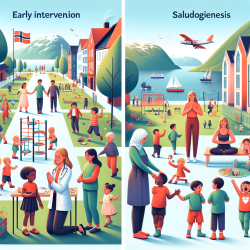The landscape of biomedical research is evolving rapidly, with data integration playing a pivotal role in understanding complex biological systems. The research article "LinkedImm: a linked data graph database for integrating immunological data" presents a groundbreaking approach to data integration using graph databases. This blog explores how practitioners can leverage these insights to enhance their skills and encourages further exploration in this field.
The Power of Graph Databases
Traditional SQL databases have long been the standard for managing biomedical data. However, the advent of NoSQL technologies like Neo4J offers a more flexible and scalable method for integrating diverse data types. The LinkedImm project demonstrates the feasibility of using graph databases to store and query immunological data with complex relationships.
A graph database like Neo4J excels in handling highly related, semi-structured data typical in biological research. It allows practitioners to model biological networks naturally and perform efficient queries that can uncover novel relationships among heterogeneous data sets.
Practical Applications for Practitioners
The LinkedImm project provides several practical applications that practitioners can adopt:
- Data Integration: Use graph databases to integrate various types of biological data, such as gene-disease networks or protein-drug interactions, to facilitate comprehensive analyses.
- User-Friendly Interfaces: Implement intuitive web-based dashboards and natural language query interfaces to make complex data accessible without requiring extensive technical knowledge.
- Hypothesis Generation: Utilize graph traversal queries to generate hypotheses by revealing unexpected connections between biological entities.
Encouraging Further Research
The LinkedImm project opens avenues for further research in several areas:
- Scalability: As the size of graph databases grows, exploring methods to enhance speed performance and scalability will be crucial.
- Silo Integration: Develop strategies to integrate siloed graph databases across different domains to enable more comprehensive queries.
- NLP Integration: Advance natural language processing capabilities to improve user interaction with complex datasets.
A Call to Action
The insights from the LinkedImm project highlight the transformative potential of graph databases in biomedical research. Practitioners are encouraged to explore these technologies further and consider their implementation in their work. By doing so, they can enhance their analytical capabilities and contribute to more integrated and insightful research outcomes.
LinkedImm: a linked data graph database for integrating immunological data










